The Trench War
http://www.longlongtrail.co.uk/soldiers/a-soldiers-life-1914-1918/life-in-the-trenches-of-the-first-world-war/From Christmas 1914 until March 1918 trench warfare was the main type of fighting. For three and a half years, on every front, millions of soldiers lived, fought and died in the trenches.
At first the trench systems were not planned, they simply evolved as a way of keeping soldiers safe while preventing the enemy from advancing. Over time they became extremely complex. The main feature of trench warfare was a network of two, three or four lines of trenches built by each side stretching in an unbroken line for hundreds of kilometers from the English Channel to the Swiss Alps.
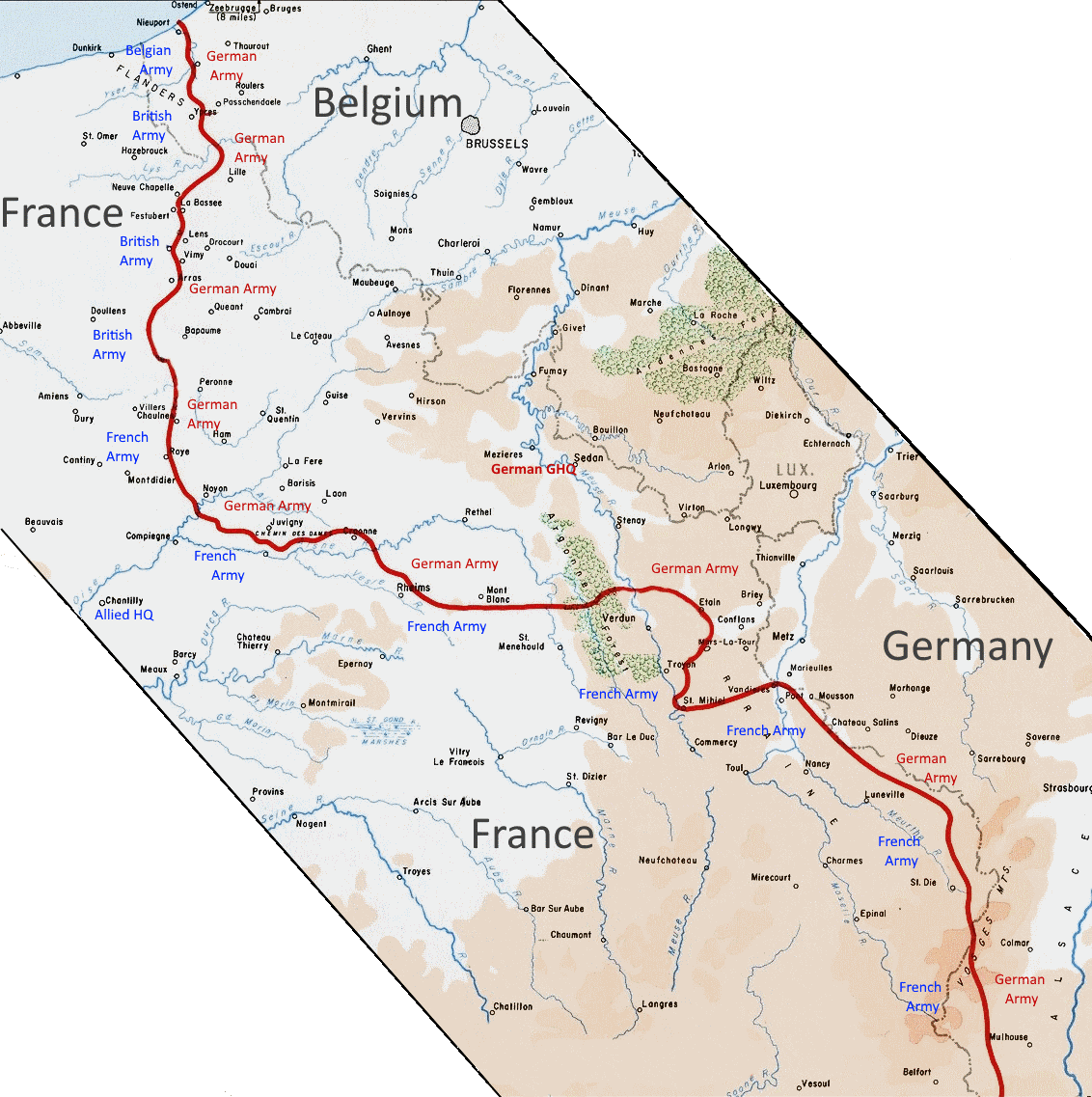
The most forward trench was the front line or "main fire trench". Like all trenches it followed a pattern of turns creating "bays" or "traverses". These allowed soldiers to seek shelter around a corner when a shell exploded, or to use the turns as a defensive position if the trench beside them was over-run. Sometimes there were trenches called "saps" projecting out into the area between the two sides - known as No Man's Land. These trenches led to forward observation or firing posts and they allowed soldiers to advance without exposing themselves to enemy fire.
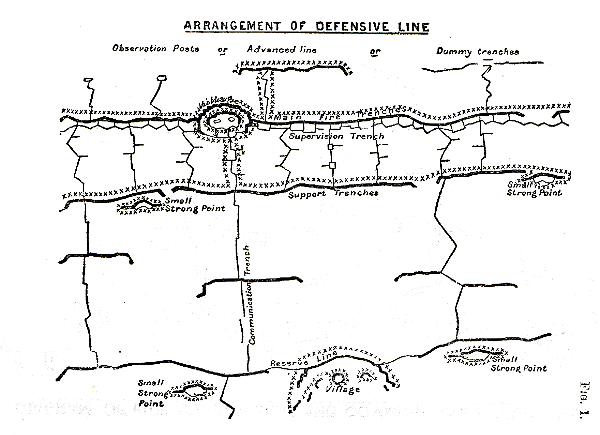
The ground in front of the trenches would have massive belts of barbed wire in many rows. The barbed wire was essential to hold up an enemy advance long enough for the defensive machine guns to slaughter the attackers. There were pathways through the barbed wire with signs only visible to the defenders.

Depending on terrain, there would be one, two or three supporting trenches - each spaced a hundred meters or more back from the trench in front. These trenches contained reinforcements for attack or defence. These were also protected by many belts of barbed wire. Later in the war, the soldiers also constructed additional defensive strong points called redoubts. These were used as refuges and points of resistance if the enemy penetrated the front lines.
Trench lines were connected by communications trenches. These were used to allow men, ammunition and supplies to move up. Communication trenches also stretched back from the rearmost trench to allow new soldiers to enter the trench system safely.
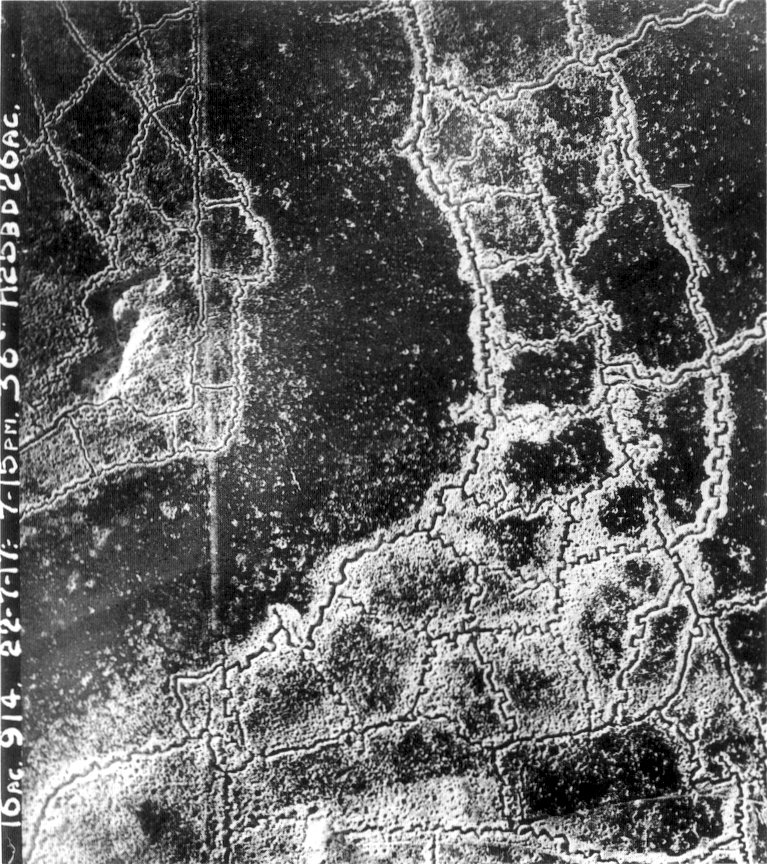
The trenches had extensive defenses. As well as the massive belts of barbed there would be observation posts and machine gun posts and snipers in No Man's Land. Each trench line would also have multiple machine gun posts covering the gaps in the barbed wire. Beyond this every soldier was armed with a rifle, bayonet, hand grenades or "bombs", and knives, shovels or clubs for hand-to-hand fighting.
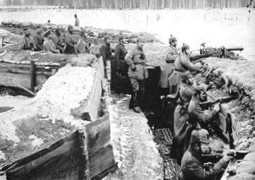
There were also batteries of trench mortars and longer range artillery connected to the trenches by underground telephone wires. The scouts had signal flares to warn of enemy movements. The telephone system was also connected to the Divisional headquarters and reserve billets so that reinforcements could be called in quickly if needed.
The Germans had a very similar system of trenches, but their dugouts and shelters were deeper and built of concrete and steel. The distance between the two front lines varied from as little as 30m to several hundred metres depending on the local conditions.
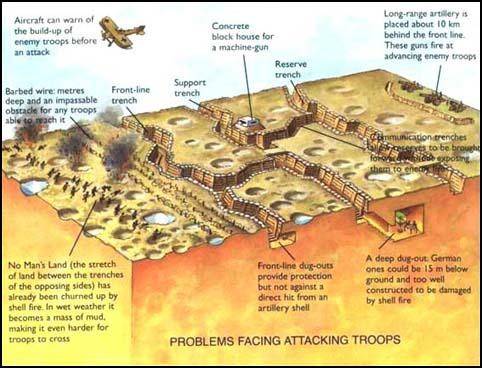
Attacking a trench could be extremely challenging. The massive belts of barbed wire slowed the attackers down, and the machine gun posts and artillery could massacre hundreds of attackers in seconds. If the attackers did reach the enemy trench they faced brutal hand-to-hand fighting, or massed grenade attacks, with enemy reinforcements pouring in. Beyond that, any reinforcements or resupply had to cross No Mans' Land, running the gauntlet of machine gun and artillery. Many attacks collapsed because the attackers became trapped in an enemy trench, with no reinforcements, running out of ammunition, water or food.
The following film clip from "All Quiet on the Western Front" recreates a German attack and French counter-attack from the early part of the war
German "Over the Top" attack from "All Quiet on the Western Front" ( 1979) 3:52